Matías Almeyda is not afraid of a challenge. He started his coaching career by taking on the immense pressure of leading River Plate back into the Argentinian top flight following the first relegation in their history; next, he inherited a relegated Banfield side; then, he confronted the task of reawakening a giant in the form of Mexican club Chivas.
So far at least, he has also proved capable of rising to them. He achieved promotions at the first time of asking at both River and Banfield, and then produced a series of triumphs at Chivas, twice winning the Copa MX, delivering their first league title since 2006 and finally going all the way in the CONCACAF Champions League in what was to be his farewell to the team.
But even by his standards, his decision to join the San Jose Earthquakes was a bold one. The team finished bottom of the MLS standings in 2018, recording just four victories alongside nine draws and 21 defeats, and have made the playoffs in just two of the last 10 seasons.
Immediately, though, the vibes coming out of pre-season were positive. “We’ve trained really, really hard,” midfielder Magnus Eriksson explained in February. “There’s a new philosophy, and we believe in it. It’s a lot of changes from last year in the way we play, but everything is positive.” That counted for little when San Jose lost their first four matches of the season by a combined score of 14-2, but things have got a lot better since, with a subsequent record of three wins, two draws and two defeats raising hopes for a decent campaign.
Almeyda’s plan for revitalising the Earthquakes revolves around the implementation of an entirely different tactical framework to the one that they used last season. “Our scheme involves everyone playing and everyone running,” Almeyda told MLSSoccer.com last week. “Everyone is committed and whoever is not committed is left to be exposed.”
“Marcelo Bielsa is probably the coach who has influenced him the most,” explains Lucas Marinelli, author of La Estrategia de Almeyda, a book that breaks down Almeyda’s approach. “Due to the constant pressing, the use of wingers, the high-tempo impressed on most attacks, and the positional rotations. I do see an evolution through Almeyda’s career, but those main characteristics have been the same throughout.”
In San Jose, the most outwardly evident change has been the degree to which the Earthquakes seek to press and disrupt opposition build-up play. Last season, they were one of the most passive teams in MLS, allowing 13.88 opposition passes per defensive action.
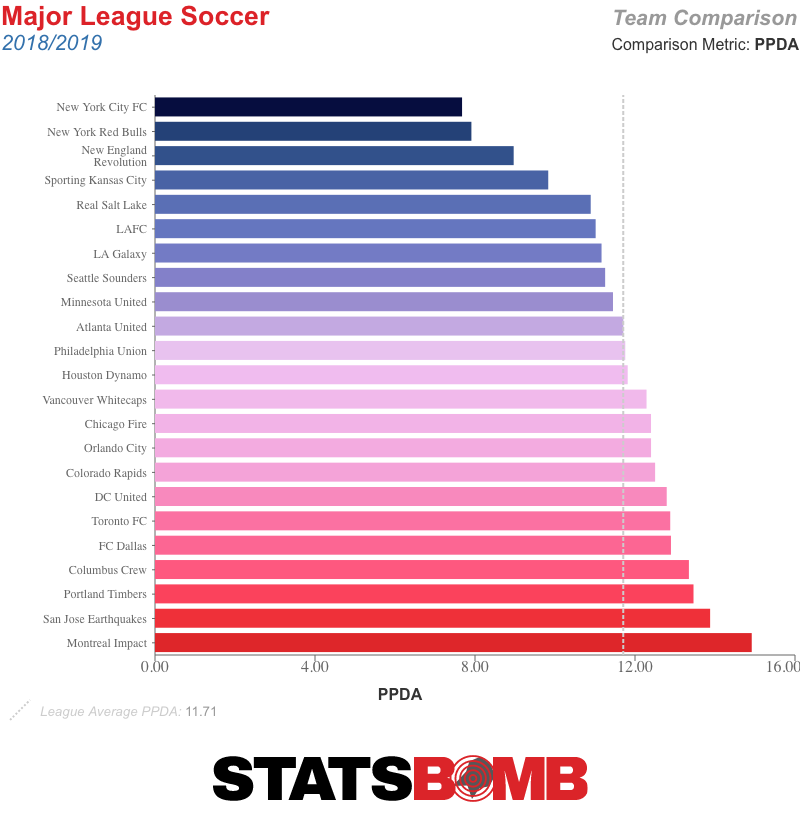
This season, they are one of the most aggressive, allowing just 7.81 opposition passes per defensive action.
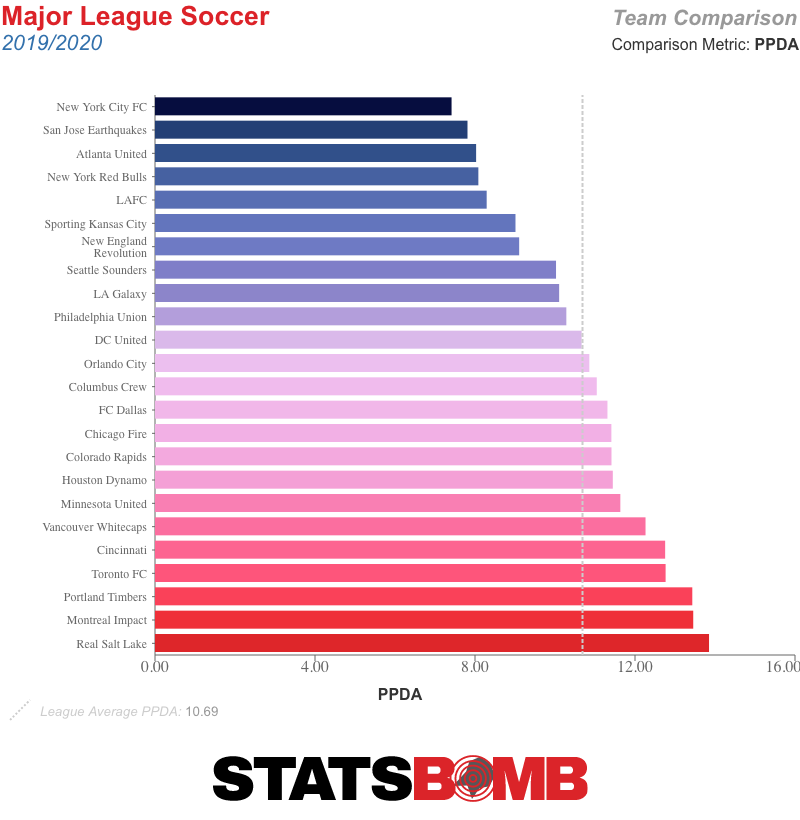
As Marinelli explains, it isn’t always the case that Almeyda’s sides press high up the pitch. San Jose are pretty middle of the road in MLS in terms of how far from their own goal they perform their average defensive action. But once their opponents reach the point at which the press is scheduled to begin, the commitment with which they charge down the ball and hassle receivers is impressive to see. Their predominantly man-marking scheme sees players regularly stepping out of position in pursuit of their men, lending the system a somewhat chaotic look at times.
In the below clip, it is the right central defender Harold Cummings (number 31) who can be seen following the Seattle wide-forward Jordan Morris (13) back towards the centre circle and then swiping at the ball when Kim Kee-hee (20) takes a heavy touch into his reach.
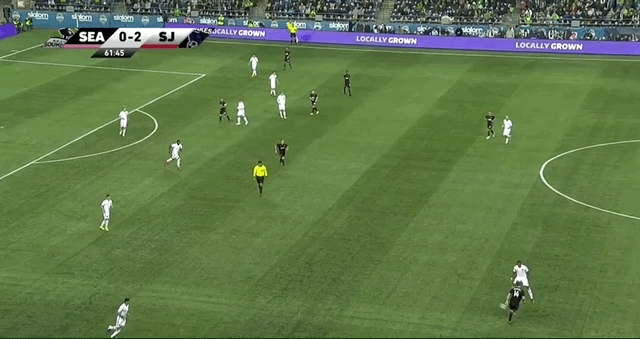
Learning the specifics of this pressing system and being able to put it into action has been one of the key challenges for the squad since Almeyda’s arrival. The hardest part “is understanding exactly when to follow guys and when to switch,” midfielder turned full-back Tommy Thompson recently told The Athletic. “It’s a delicate balance of making sure you stay with your guy, but then if your guy is going all over the field, you can’t just follow him.”
But it isn’t just in defence that the group has had new ideas to take on board. San Jose are also attacking in a different manner this season, with more of a focus on possession. “In his beginnings at River, Almeyda used to play a fast-tempo, really vertical game, without playing the ball out from the back and looking to get it wide as quickly as possible so that the wingers could win individual duels,” Marinelli. “It was at Banfield that he adopted the possession style. The team played out from the back more and built attacks from their own goal. At Chivas, it was kind of a higher level of that style.”
The Earthquakes’ possession share has gone up from 48% last season to 55% this time around, and they are completing over 35% more passes per match than they did previously. That focus on playing short out of defence is demonstrated by the decrease in their average goalkeeper pass length, from 46.60 metres last season to 35.78 this season -- from the sixth longest in MLS to the fourth shortest. There is clearly a learning curve associated with the implementation of such a style, and there have been occasions during their matches to date when that has been painfully clear.
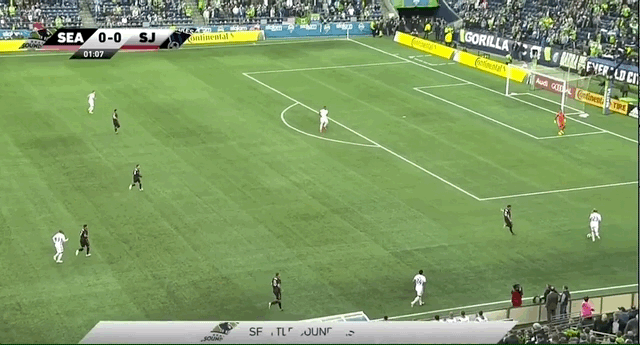
Although Almeyda has changed the manner in which his teams work the ball forward as his coaching career has progressed, one thing has remained constant. “He wants his teams to use a lot of width, and wingers are a usual thing in his formations,” Marinelli explains. “He likes them to be vertical and dangerous in one-on-one situations, so that they are able to beat their markers or create interior spaces for the midfielders to profit from.”
On the right hand side, Cristian Espinoza, a loan signing from Spanish side Villarreal, certainly fits the bill. Of all those who have seen at least 600 minutes of action, he leads the team with 2.04 successful dribbles per 90 and often helps create space for the right-back, usually Thompson, to overlap outside or inside of him depending on which way he goes. His role is primarily creative. He leads the team in both xG assisted and passes into the box per 90, even though he is also the team’s second most frequent shooter, with 2.43 shots per 90.
On the left of the team’s normal 4-2-3-1 formation, Shea Salinas has a divergent role. On that side, it is usually left-back Nick Lima who provides the attacking width. Salinas is generally positioned further upfield and infield than Espinoza. Aside from primary striker Danny Hoesen, no one touches the ball inside the area more often than Salinas (6.35 touches inside the box per 90 versus 3.49 for Espinoza). While he only gets off just over a shot and a half per 90, they are of excellent, albeit unlikely to be sustained over a larger sample size, quality.
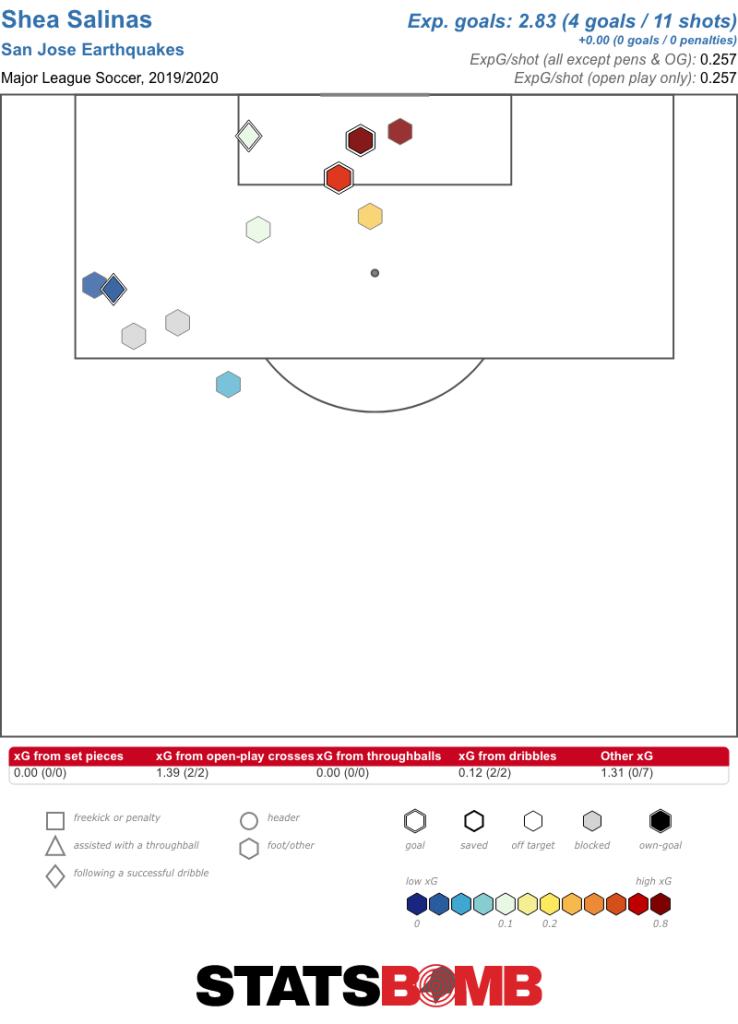
Salinas, primarily a left-back in recent years, has notched four goals to date, already making it the highest scoring season of the 32-year-old’s MLS career. He joins Lima (previously a right-back), Thompson (previously a midfielder) and Eriksson (a wide man turned central attacking midfielder) in taking on an unfamiliar position under Almeyda.
But how have all of these changes transferred to chance creation and results? Last season, San Jose’s average expected goal difference (xGD) per match was 0.63 -- the second-worst record in MLS. It has improved, but it is still in negative territory, at -0.44 xGD per match. That is one of the six worst records in the league, although it must be noted that it is heavily influenced by a pair of dreadful defensive performances in early defeats to New York Red Bulls and Los Angeles FC. At both ends of the pitch, things are starting to trend positively (the second vertical line on the graph indicates the start of this season, and thus Almeyda’s time in charge).
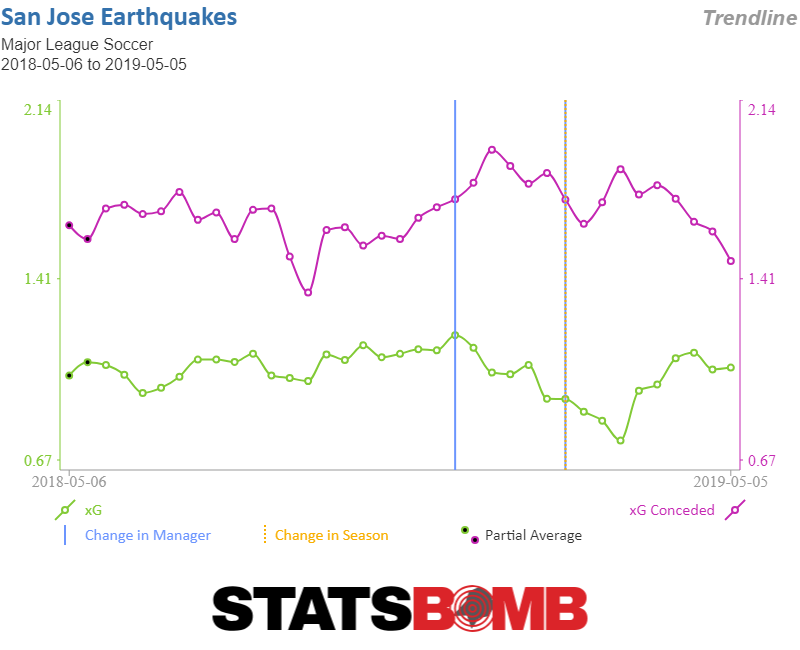
There seems to be confidence amongst the players that things will continue to improve as they get used to Almeyda’s system and the demands it makes of them, but there is certain to be a point at which he begins to push up against the limitations of the squad. Even with some solid pickups in the off-season -- Espinoza chief among them - this is still largely the same group who came bottom of the pile in 2018.
San Jose finished a full 28 points shy of the playoff places last season, and expecting Almeyda to turn that deficit around in one season, even after a promising start, would be asking an awful lot. This should be a campaign for bedding in his ideas, identifying personnel deficiencies and putting a framework in place to make a proper push for a playoff place in 2020. Almeyda has showed himself capable of turning teams around if given time to do so, and the early signs are that he might just be able to repeat the trick in San Jose.